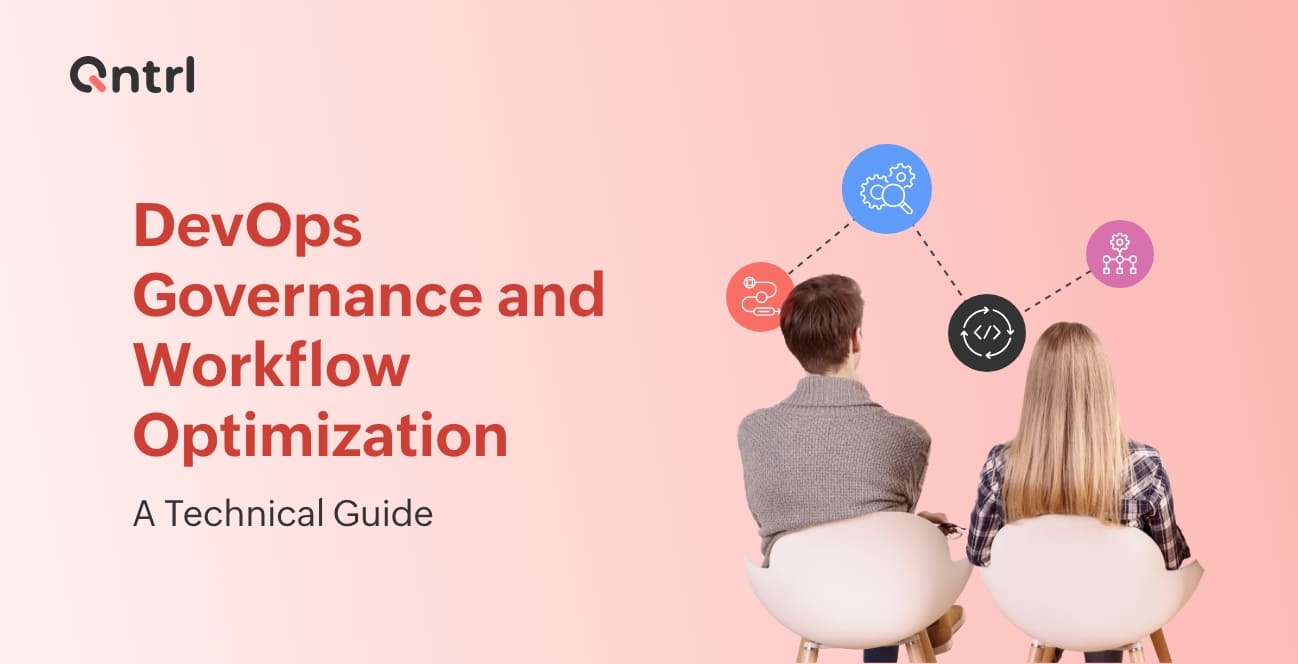IT governance: How to overcome challenges and implement advanced processes

Have you ever wondered how large companies keep their IT systems and processes running smoothly and without failures?
According to McKinsey, 70% of digital transformation initiatives fail—and one of the main factors is a lack of IT governance. The effective implementation of advanced IT processes is crucial, helping organizations optimize their investments and operations and ensure compliance and information security.
In this article, you'll learn about best practices for mapping processes and innovative technologies that can improve your company's IT infrastructure, increase team performance, and strengthen your competitiveness in the market. Check it out!
But what is IT governance, after all?
In IT governance, all the processes, policies, and metrics ensure that information technology aligns with business goals. In other words, it plays a big role in risk management and ensures regulatory compliance.
When implemented at a company, IT governance offers tangible advantages, such as:
Strategic alignment
Assertive management of resources, promoting operational efficiency
Performance measurement for continuous improvement of IT projects and services
Risk management, especially involving cybersecurity, information security, and compliance
Delivering value to internal and external customers with rapid problem-solving.
Importance of IT governance at companies
IT governance ensures that processes align with a business's strategic objectives. This improves overall operational efficiency, reduces risk, and facilitates compliance with current regulations.
Without good IT governance, companies may face failures and problems that compromise decision-making and transparency. Another critical point is information security: IT governance includes procedures to protect sensitive data against internal and external threats, which is essential in an increasingly digital and interconnected world.
Challenges of implementing IT governance
Even with all the benefits, implementing IT governance can bring challenges:
Lack of strategy
Often, there's no connection between IT and other sectors of the organization, which can generate bottlenecks in projects. To overcome this challenge, IT governance must be aligned with the company's strategic objectives, involve all stakeholders, and ensure clear communication between IT teams and other teams.
Resistance to change
Implementing IT governance may encounter resistance within the organization, from both employees and leaders. This is especially true if these changes require the adoption of new processes or technologies.
Organizational culture can also be a barrier in this regard, since IT is seen only as technical support at some companies, rather than a strategic partner. To mitigate this, it's necessary to promote a culture of change and innovation that values IT and offer adequate training to involve all stakeholders in each stage of the implementation process.
High complexity
IT governance involves diverse systems, platforms, and technologies, which makes the process even more complex and challenging. Integration with other systems and risk management based on information security are just some aspects that increase complexity.
Organizations need to adopt a more structured approach and use recognized IT governance frameworks to overcome this barrier.
Lack of resources and skills
The lack of financial resources and qualified professionals are also common challenges that can compromise the effectiveness of governance practices. To face these difficulties, both in attracting and retaining qualified talent and the scarcity of resources, companies need to focus on continuous training and think about strategic partners to fill these resource gaps that affect investments in new technologies and necessary tools.
Compliance
As privacy legislation becomes increasingly essential in a globally connected world, IT governance must ensure that all operations and technology processes comply with relevant regulations.
Laws such as GDPR (General Data Protection Regulation) in the European Union and the LGPD (General Data Protection Law) in Brazil, for example, impose strict requirements for handling personal data, requiring organizations to adopt robust security measures and privacy policies.
This challenge requires developing and implementing clear information security and data privacy policies at the company, and that these policies are aligned with legal requirements. In addition, conducting internal audits to assess compliance becomes necessary to detect and correct problems and identify areas for improvement.
IT governance: When to implement it
No magic formula will help your company know exactly when to implement IT governance. However, some signs can (and should) be observed.
Some examples are misalignment between IT and business objectives, frequent delays or failures in IT projects, and the lack of planning to mitigate problems with data loss, breaches, or system gaps.
In practice, IT governance should be implemented when the company reaches a level of complexity that justifies the need for more structured processes. Common signs include:
Rapid growth: The company is increasing in size and needs robust processes to support this expansion
Repetitive problems: There are repetitive IT problems that affect operations and productivity
Need for compliance: The company needs to comply with industry-specific regulations and standards.
How do you establish IT governance at your company?
In these and many other cases, ensuring that the implementation follows a structured plan with clear guidelines for all involved is necessary:
Initial assessment and planning - Before implementation, a detailed assessment of IT at the company is necessary, identifying existing processes and gaps that may compromise performance. From there, a robust plan must be drawn up to guide IT governance and overcome the main challenges to achieve the proposed objectives.
Definition of standards and methodologies - The choice of recognized standards, such as ITIL, COBIT, or ISO/IEC 20000, must be made according to the size of the company and the complexity of the operation. In practice, these frameworks provide clear guidelines for establishing efficient governance processes.
Stakeholder involvement - For the implementation to be successful, all stakeholders, including senior management, IT teams, and other departments, must be involved from the beginning of the process.
Gradual implementation and monitoring - Implementation should be gradual to allow for continuous adjustments and improvements. Establish KPIs to monitor progress and measure the effectiveness of IT governance. Periodic reviews and audits help ensure that processes are working as planned.
Now it's time to put this knowledge into practice and transform your company's technology infrastructure. Remember that IT governance is not just a matter of compliance but also a strategy to increase competitiveness and ensure superior organizational performance.
To find out how Qntrl can optimize your company's IT processes, ensuring even greater control, visibility, and security in operations, visit: https://www.qntrl.com/it.html.
Enjoying your reading?
Enjoy organization and visibility too!
Qntrl can help you organise, control and improve production and projects in your team.







